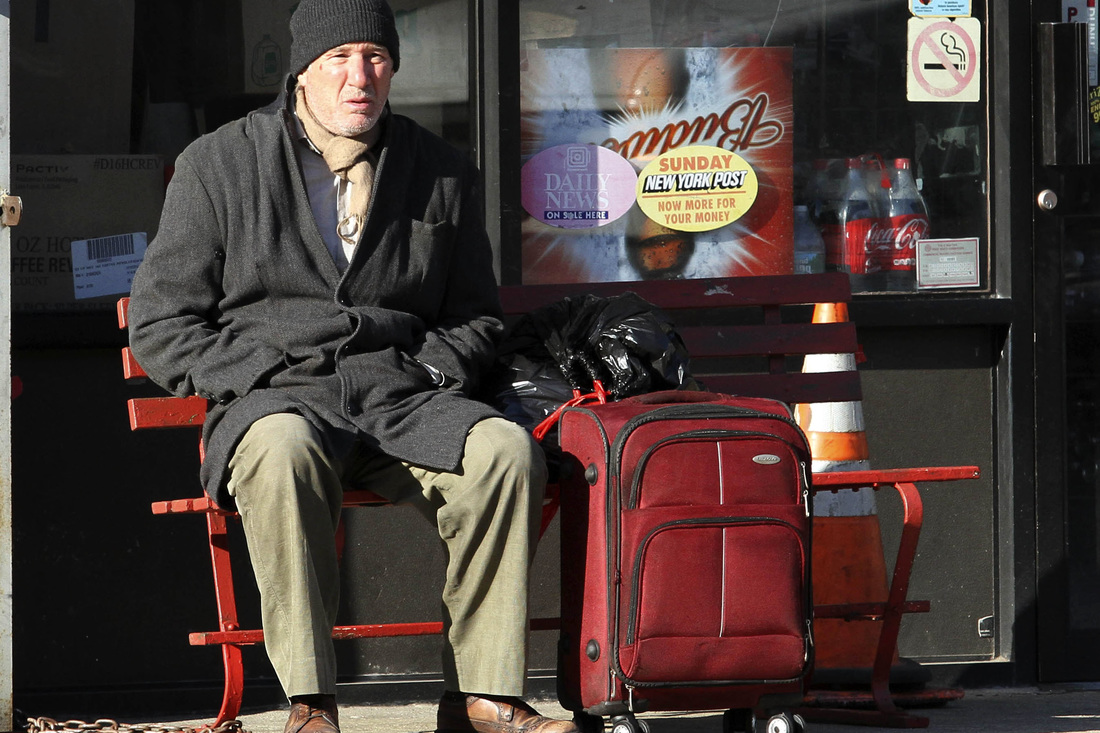This movie is a real master class in storytelling through cinematography. While watching, the first things I really noticed were the shot types and camera positioning. Moverman and cinematographer Bobby Bukowski shot most of the film through hidden cameras, typically shooting from behind doors and through windows; therefore, most shots keep the viewer very distanced from George and the other characters, mimicking the literal distance and invisibility of most of society’s “interaction” with homeless people on a daily basis. This caused for there to be a very noticeable shift when they shot close-ups that brought us closer to George, usually in moments of vulnerability. Each shot was static, either gradually pushing in or pulling out, giving a resounding sense of the overbearing time in which George is suspended, as he has nowhere to be and nothing to do, and must find ways to spend his days as he is constantly bombarded with his reality.
The sound design was also ridden with expertise. There was a lot of focus on diegetic sound; the static shots of the stillness of George in the city were contrasted with the sonic chaos of the city surroundings. And when the sound (rarely) ever became nondiegetic, it was very noticeable, almost strangely so.
I find George to be very interesting. I can't quite figure him out; it's hard to see his motivation. Which is not necessarily a bad thing- it's good to have deep, interesting protagonists. But he's a particularly murky protagonist. You know how when you watch movies, you know kind of what the character is or what that character does? You usually know the type of person or character you're watching? Well, you can't tell with this protagonist. Gere gives probably his most nuanced, gravitas-laden performance yet. The viewer very gradually receives information about our protagonist: an estranged and fed-up daughter, a dark and mistake-laden past. We’re distanced from him, physically, mentally, and emotionally. It's seems hard to connect at all; George is a frustrating character, rarely having much energy, often not being able to find the right words, sometimes making confusing decisions. But somehow, we’re pulled in. Moreover, we connect because we pity him, although as the movie goes on, it can somewhat difficult to keep that pity. But actually, the movie doesn't hit you over the head with pity and sorrow and preaching and doesn't call you to empathize with the character as much as it does make you think about his decisions and the reality of the situation that he's in. It makes for an interesting and unique movie-watching experience. It's easy to see how this choice in characterization highlights homelessness and how it works in our culture: one is distanced from these people in every way. We don't stop to see them. But as for the distance on the character and story level, I can't quite understand. I can't figure this guy out. I'm not sure we’re supposed to.
Time Out of Mind has no gimmicks, no typical, overused cinematic draws. Just subtle artistry and consciousness. On the surface, the movie is about the way that we treat the homeless in our society. About how they’re trapped in this system, and how it's hard for them to get out, even though we all convince ourselves that we want them to. But below that surface, there's a deeper meaning: a meditation on the economics of the second chance and forgiveness and how that works in our lives. It's about how, even though we disappoint so many people again and again, and how we disappoint ourselves countless times, the heart can still love and still forgive, if we allow ourselves to get there. About how you have to come to terms with the lows of your past and finally accept them, before you can do the work to get to the highs of your future.
Rating: A+

 RSS Feed
RSS Feed
